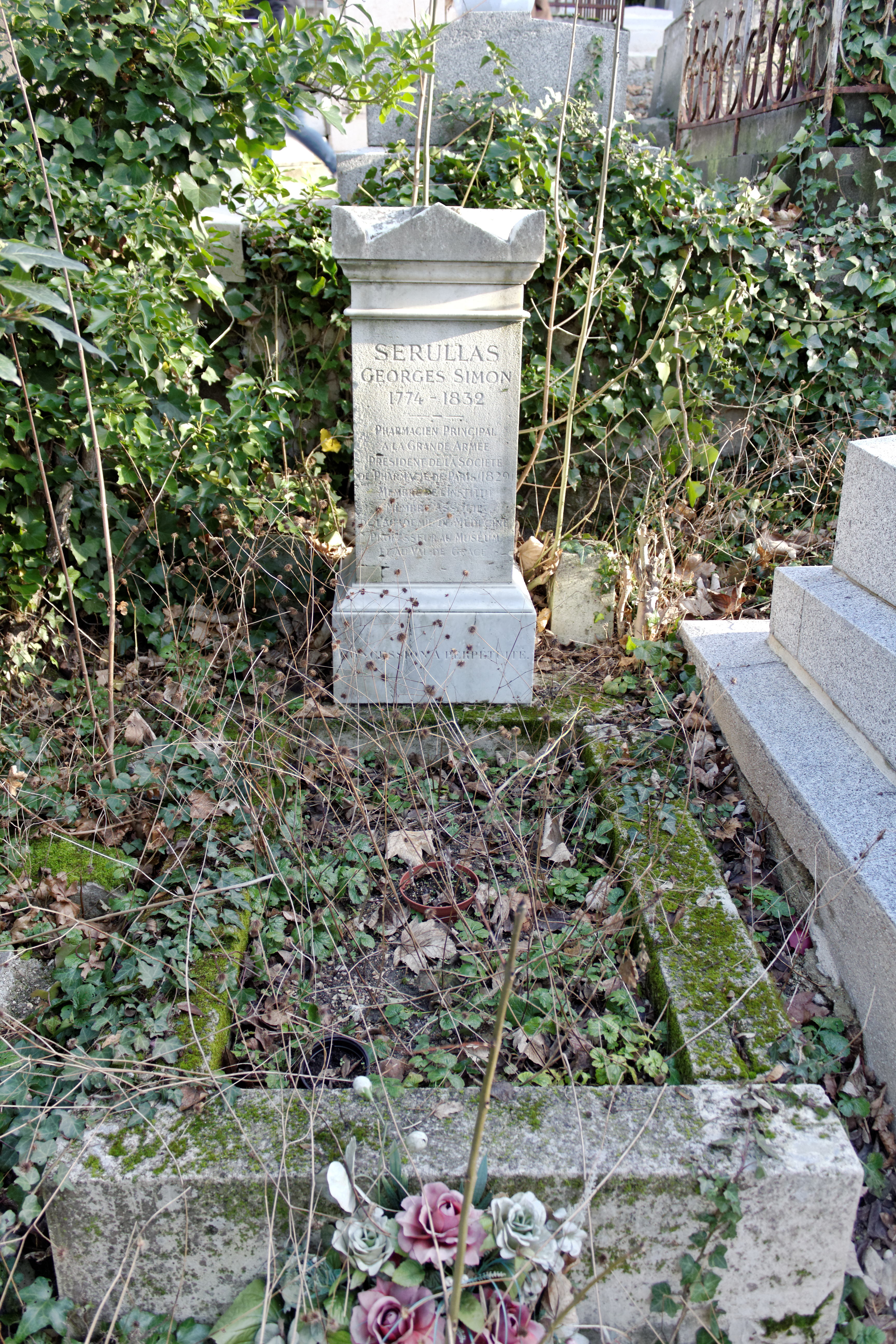Georges-Simon Serullas on:
[Wikipedia]
[Google]
[Amazon]
Georges-Simon Serullas (2 November 1774 in Poncin – 25 May 1832 in

Paris
Paris () is the capital and most populous city of France, with an estimated population of 2,165,423 residents in 2019 in an area of more than 105 km² (41 sq mi), making it the 30th most densely populated city in the world in 2020. S ...
) was a professor of pharmacy
Pharmacy is the science and practice of discovering, producing, preparing, dispensing, reviewing and monitoring medications, aiming to ensure the safe, effective, and affordable use of medicines. It is a miscellaneous science as it links hea ...
notable for being the first to publish a work on Iodoform
Iodoform (also known as triiodomethane and, inaccurately, as carbon triiodide) is the organoiodine compound with the chemical formula C H I3. A pale yellow, crystalline, volatile substance, it has a penetrating and distinctive odor (in older che ...
, an early antiseptic
An antiseptic (from Greek ἀντί ''anti'', "against" and σηπτικός ''sēptikos'', "putrefactive") is an antimicrobial substance or compound that is applied to living tissue/ skin to reduce the possibility of infection, sepsis, or put ...
and disinfectant
A disinfectant is a chemical substance or compound used to inactivate or destroy microorganisms on inert surfaces. Disinfection does not necessarily kill all microorganisms, especially resistant bacterial spores; it is less effective than st ...
.
Biography
He was a professor and head pharmacist at the hospital ofVal-de-Grâce
The (' or ') was a military hospital located at in the 5th arrondissement of Paris, France. It was closed as a hospital in 2016.
History
The church of the was built by order of Queen Anne of Austria, wife of Louis XIII. After the birth of he ...
; professor of chemistry at the Jardin des Plantes (the chief botanical garden
A botanical garden or botanic gardenThe terms ''botanic'' and ''botanical'' and ''garden'' or ''gardens'' are used more-or-less interchangeably, although the word ''botanic'' is generally reserved for the earlier, more traditional gardens, an ...
in France), and member of the French Academy of Sciences
The French Academy of Sciences (French: ''Académie des sciences'') is a learned society, founded in 1666 by Louis XIV at the suggestion of Jean-Baptiste Colbert, to encourage and protect the spirit of French scientific research. It was at th ...
(elected December 28, 1829 - Chemistry section).
He was one of the first researchers to draw attention to the haloform reaction
In chemistry, the haloform reaction is a chemical reaction in which a haloform (, where X is a halogen) is produced by the exhaustive halogenation of an acetyl group (, where R can be either a hydrogen atom, an alkyl or an aryl group), in the ...
. In 1822, Serullas added potassium metal to a solution of iodine
Iodine is a chemical element with the symbol I and atomic number 53. The heaviest of the stable halogens, it exists as a semi-lustrous, non-metallic solid at standard conditions that melts to form a deep violet liquid at , and boils to a vio ...
in ethanol
Ethanol (abbr. EtOH; also called ethyl alcohol, grain alcohol, drinking alcohol, or simply alcohol) is an organic compound. It is an alcohol with the chemical formula . Its formula can be also written as or (an ethyl group linked to a ...
and water to form potassium formate and iodoform
Iodoform (also known as triiodomethane and, inaccurately, as carbon triiodide) is the organoiodine compound with the chemical formula C H I3. A pale yellow, crystalline, volatile substance, it has a penetrating and distinctive odor (in older che ...
, called in the language of that time ''hydroiodide of carbon'', and used as an antiseptic.
He is buried in the Père Lachaise Cemetery
Père Lachaise Cemetery (french: Cimetière du Père-Lachaise ; formerly , "East Cemetery") is the largest cemetery in Paris, France (). With more than 3.5 million visitors annually, it is the most visited necropolis in the world. Notable figures ...
(10th division).

Publications
*''Observations physico-chimiques sur les alliages du potassium et du sodium avec d’autrs métaux ; propriétés nouvelles de ces alliages servant à expliquer le phénomène de l’inflammation spontanée du pyrophore et la cause des mouvemens du camphre sur l’eau. Antimoine arsenical dans le commerce.'' Metz, Antoine, September 1820. *''Second mémoire sur les alliages du potassium et sur l’existence de l’arsenic dans les préparations antimoniales usitées en médecine.'' Metz, Antoine, May 1821.References
{{DEFAULTSORT:Serullas, Georges-Simon 1774 births 1832 deaths French pharmacists People from Ain